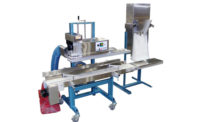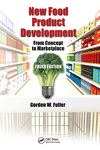In the confectionery industry, profit margins and market share are increasingly reliant on products developed in just the last few years.
Just look at the candy shelves in your neighborhood supermarket or convenience store, where a large percentage of the products sold today didn’t even exist 12 months ago – and many will be gone by this time next year.
With consumers on the move, and the confectionery landscape changing so quickly, accelerating new packaging development has never been more critical, says J.L. Clark Vice President Michael Matus.
“Our confectionery customers are increasingly seeking faster development of the new packaging designs and materials that will help differentiate their brands on store shelves,” says Matus. “In response, we have put a number of new technologies, and methodologies, in place to take our customers from ‘concept to consumer’ in much less time, and with better overall results.”
Here’s how:
Taking the first step
Of course, the hardest part of any project is just getting started. But at J.L. Clark, taking that first step has never been easier. “Depending on customer needs and the scope of the project, J.L. Clark will schedule an INNOVATION DAY right at the customer’s facility,” says Joe Valley, J.L. Clark director of R&D and plastics and new business development. “Customers get an up-close, hands-on look at what’s possible today in packaging… everything from highly decorative lithography techniques to catch a consumer’s eye, to breakthrough new designs and materials for sustainability, to new manufacturing capabilities that can save money downstream.”

J.L. Clark’s in-house cross-functional team of experts in engineering, graphic design, manufacturing and project management then begin collaborating with the customer.
Brainstorming sessions produce simple sketches, which quickly evolve into more detailed 3-D electronic models done using J.L. Clark’s powerful ProEngineer and AutoCad modeling software. Soon ‘virtual’ packaging begins to emerge that enables the team to easily, and economically, refine concepts.
“Functionality and appearance can be modified practically at the touch of a button,” says Valley. “Packaging also can be quickly evaluated for its manufacturability, and then optimized to strike the perfect balance between economy, form and function, whether metal, plastic or a combination of both.”

But there’s nothing quite like seeing, touching and ‘tweeking’ the actual package, is there? That’s why J.L. Clark has put into place advanced rapid prototyping technology that enables them to produce physical, functional samples in a matter of hours.
These samples closely approximate the end product, and are ideal for allowing everyone a chance to truly experience the package at the earliest possible stage.
But they don’t stop there. Once plastic packaging is in the final stages of development, for example, J.L. Clark can even build a prototype mold in-house and perform a short pilot run to closely analyze every aspect of the production process, and all critical product characteristics. They can perform a similar process for metal packaging as well, using their new digital printing capability to produce high quality, highly decorated metal containers in quantities as few as one, and with turn-around time measured in hours rather than days.
In addition, product testing is performed to evaluate key product characteristics such as product life cycle, the force needed to open and close a lid, and so on.

At J.L. Clark, the process of getting this great new concept into ful-scale production and into the hands of your customers by your product launch date is not only fast, but remarkably painless, adds Matus. “First, a J.L. Clark Project Manager is dedicated to the project from Day One.
The Project Manager will use “Stage Gate” project management techniques to track, measure and maintain artwork, production tooling and dozens of other key scheduling benchmarks in real time. Even better, J.L. Clark is vertically integrated, putting all of the state-of-the-art manufacturing resources under one roof.”
These resources include:
•A 100% digital pre-press, proofing, and plate manufacturing department for precise graphic reproduction and award-winning metal lithography – the best in our industry.
•Metal lithography using UV inks rather than with conventional solvent-based inks, for throughput times up to four times greater, and elimination of Volatile Organic Compounds (VOC).
•Highly automated metal fabrication resources.
•State-of-the-art injection molding with secondary operations such as labeling, door closing, even filling.
• A host of emerging new technologies, including digital printing, thin-wall molding, in-mold labeling, biodegradable ‘bio-plastics,’ polypropylene clarifiers, and much more.
For more information, visitwww.jlclark.com.









